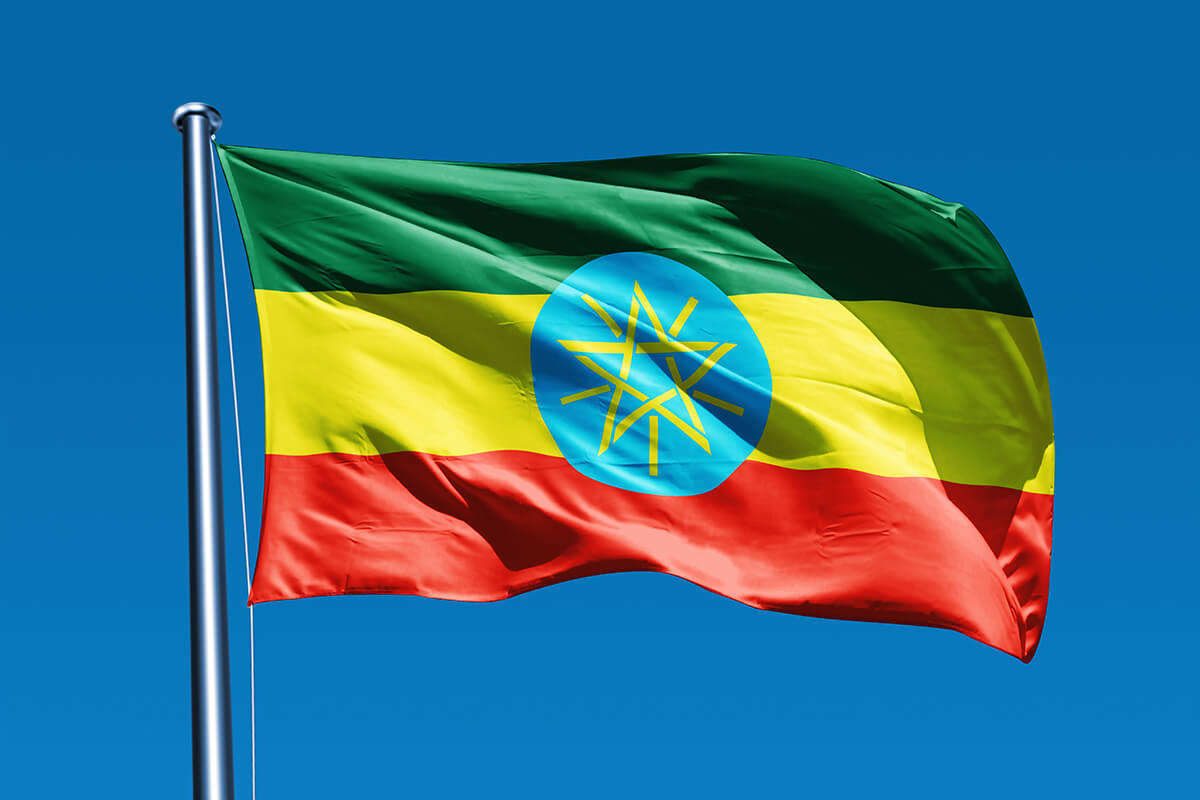On November 4, 2020, Ethiopian Prime Minister Abiy Ahmed accused the Tigray People’s Liberation Front of attacking a government military base and attempting to steal artillery and other weapons. He subsequently launched an offensive, and since then Ethiopia’s Tigray region has been at war, resulting in thousands of deaths, over 2 million people displaced, and has sent tens of thousands of refugees into Sudan. This internal conflict is directly linked to Ethiopia’s tumultuous leadership and intense ethnonationalism.
The Tigray region ruled Ethiopia for over two decades, but the rise of the Amhara and Oromia regions led to a regime and ideological change in Ethiopia. These two regions were represented by the powerful prime minister, who is the head of government.
The Rise and Ruling of TPLF
The Tigray People’s Liberation Front (TPLF) has a long and powerful history in Ethiopia. The TPLF was formed in 1975, a time when millions of people across Africa and the Middle East were demanding revolutions and fighting for liberation. After emperor Haile Selassie was murdered in 1975, harsh authoritarian rule was imposed. In the Tigray region, there had been a long history of resentment toward the idea of the centralization of power within Ethiopia. Because of this, a dozen young men, inspired by Marxist-Leninism and nationalist sentiments, founded the TPLF. Throughout the late 1970s, the organization grew steadily and by the 1980s they mobilized approximately 4,000 fighters.
The TPLF was a ruthless group. They fought and destroyed rival rebel groups in Tigray and continuously downplayed their Marxist views. The rural and predominantly conservative Christian population of the Tigray region was the TPLF’s initial support base. Accordingly, the TPLF stressed the threat posed to local tradition and regional autonomy by the socialist policies of the authoritarian regime in the capital, Addis Ababa.
By the end of the 1980s, the TPLF was the biggest and most effective rebel group among the coalition of Ethiopian armed rebel groups that had united under the name of the Ethiopian People’s Revolutionary Democratic Front (EPRDF). This greater alliance was created with the sole intention of fighting the national authoritarian regime. On May 28, 1991, the EPRDF troops, with the help of like-minded Eritrean forces, seized control of the capital and the regime collapsed.
In place of the regime came the TPLF leader, Meles Zenawi. The army and intelligence services became dominated by Tigrayans, and government positions were given to former military leaders and close friends of Zenawi. Under the TPLF-dominated coalition government, there was the construction of a balanced ethnicity-based federal state in which each regional state was headed by a president elected by the state council and the individual cities were headed by a chairman, rapid development progress, massive infrastructure investment, and astonishing economic success. However, the government also actively engaged in the oppression of the Oromo and Amhara ethnicities. These two ethnicities combined comprise approximately fifty to sixty percent of Ethiopians, which is in stark comparison to the six percent of the Tigrayans. In addition, the TPLF repressed their once allied Eritreans, launching Ethiopia into a war with Eritrea from 1998 to 2000.
This war is estimated to have left as many as 100,000 people dead. In 2002, the village of Badme, which is on the border of the Tigray region of Ethiopia and Eritrea, was awarded to Eritrea by an international boundary commission created under a peace agreement between the two sides. Regardless of the deal, Ethiopia continued to maintain a nearly twenty-year military stalemate to avoid surrendering the town. Ethiopia did not give in and surrender this town until 2018.
Even with these animosities from 1998 to 2000, the United States continued to back the TPLF-dominated government and called Ethiopia a “country of enormous consequence” for it. Ethiopia is viewed by the United States and some of its allies as a vital wall against the spread of radical Islam and terrorism in the Horn of Africa, which consists of Djibouti, Eritrea, Ethiopia, and Somalia. Additionally, Ethiopia has played a critical role in keeping the peace in Africa for many years.
The Ascent of an Underdog: Abiy Ahmed
In 2012, Meles Zenawi died and his successor, Halemariam Desalegn, was too weak to manage the growing ethnic tensions. Discontent among the Oromo and Amhara ethnic groups was growing and eventually, representatives of the two communities joined forces, pushed out the TPLF, and got Oromo-Amharic politician Abiy Ahmed appointed as prime minister in 2018.
Once appointed, Ahmed fired several TPLF officials, arrested generals on graft charges, and implemented other changes to counter the Tigrayan dominance left behind. For instance, political prisoners were freed from secret prisons, exiled dissidents were welcomed home, certain state enterprises were privatized, restrictions on the media were removed. A new party, known as the Prosperity Party, was created. This new party included many previously excluded ethnic groups, however, it shut out the TPLF. Ahmed’s most notable accomplishment was the peace deal with Eritrea in which he willingly gave up the village of Badme to Eritrea without any of the economic preconditions that the TPLF-dominated government had insisted on. This, in effect, resolved the almost twenty-year conflict, earned Abiy the 2019 Nobel Peace Prize, and left the TPLF isolated.
All of these changes by Ahmed were positively seen by the international community and Ethiopia at-large as advantageous and progressive. However, Tigray’s leaders saw Abiy’s reforms as an attempt to centralize power and destroy Ethiopia’s federal system. By the summer of 2020, tensions between Ahmed and the TPLF had risen further. The TPLF refused to hand over wanted fugitives or join the new political party set up by Ahmed. Additionally, the TPLF went ahead with illegal local elections in Tigray despite polls being postponed nationwide due to the coronavirus. The rift grew deeper in October when the central government suspended funding for and cut ties with Tigray. Tigray’s administration called this a “declaration of war.”
The conflict came to a head in early November 2020, when Ahmed alleged that the TPLF raided units on federal military bases in Tigray, in which many national army officers were killed and substantial quantities of hardware were seized. Following this alleged raid, Ahmed immediately launched his offense with the promise of being swift and bloodless. The prime minister bolstered his forces by deploying militia fighters from Amhara, who swept into western Tigray amid accusations of civilian attacks. His troops captured the regional capital of Mekelle and he released a statement claiming stated: “We have completed and ceased military operations.” However, the TPLF and its armed supporters have fled to rural areas where sporadic fighting has continued.
The Conflict Today
The war in Tigray has deepened ethnic tensions and created an immense humanitarian crisis, with an estimated 4.5 million people in urgent need of assistance. This conflict is spilling over into Eritrea and Sudan and could destabilize the entire Horn of Africa region. Debretsion Gebremichael, the leader of the TPLF, is urging the international community to intervene before a “humanitarian disaster of biblical proportion will become a gruesome reality.” They are also requesting that the international community withdraw fighters including soldiers from neighboring Eritrea who are supporting the Ethiopian forces. Gebremichael claims, “Abiy Ahmed invited forces, including the Eritrean army, and they are massacring the people of Tigray.” Gebremichael did not name the other countries allegedly involved in the conflict. Somalia has previously denied that its troops have been fighting alongside Ethiopia in the conflict. In addition, the TPLF has previously alleged that drones from the United Arab Emirates (UAE) were being used to strike at its forces, but Ethiopia quickly denied those claims.
The United Nations has been unable to completely assess the situation, but there have been accusations of sexual and gender-based violations and on top of that thousands have died, hundreds of thousands are at risk of starvation and the conflict continues.
This ongoing conflict may have dire consequences, not just for Ethiopia but also for the Horn of Africa and other African nations. After all, it is possible that other minority ethnicities with differing ideologies in other African nations may follow the lead of the TPLF and rebel against their current governments.
In the end, the TPLF is trying to regain some control in the federal government of Ethiopia and reinstall their ideology and regional autonomy; the current central government is trying to unify all regions of Ethiopia and make it a stronger nation. Only time will tell if the central government with the help of the international community can control this situation and help bring peace once again to Ethiopia.







